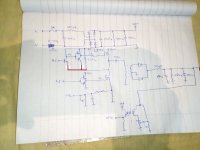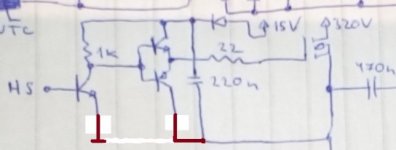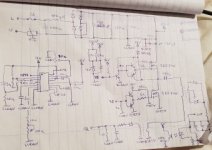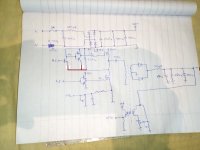@ Expressel
Your calculations seem ok to me. I think you should try a few things
1) try to take the sense voltage before the output inductor. This is not the problem because I tried without feedback too.
2) check the input voltage at load across the transformer primary. See that its not dropping too much here.
3) The wave shape at the transformer primary is not so nice. This could be due to the output inductor. You may have to use a snubber across each output diode to suppress it.
The wave form can be disturbed due to incorrect coupling within the transformer (too much leakage inductance) I know winding 13 strands is not an easy task, try using a copper sheet instead. If you get hold of some copper tape although its thin (you can always sandwich a few layers on top of each other) is another alternative to copper sheet for the primary windings.
4) Try to cover the whole width of the bobbin with the windings for good coupling
Lastly I know sandwich the secondary between the primary is not an easy task if you are using wire strands side by side. However you can bundle your primary wire in 4 bundles of 3 wires each making a total of 12 strands. here you will have 4 bundles side by side to handle during winding. Check that they will fit in one layer.
I hope this will help you solve the problem
I dont understand everything you said.
1) What sense voltage ? i suppose you mean to take the feedback before the inductor.
2) You mean to check the RMS voltage at the transformer primary ?
3) I think i dont need snubbers for the diodes because I saw this in only one schematic.
How to use a copper sheet ?
I have copper tape, how to sandwitch layers ?
4) Is it necessary to sandwitch the secondary between the primary ?
Do you know that I didn't used wire strands and maybe thats the problem.
I used only single wire 0.5mm just for the test. I suppose it has higher inductance and didn't allowed more current to flow at 50khz
Thanks Silvio, keep the good work and see this amazing schematic I invented -> 400khz switching load because I dont have a load to test my supplys (I only have 4.7ohm 15W resistor and 1x 55W halogen bulb):
Will control it with STM32F103 pcb from aliexpress, with OLED display and rotary encoder. Im little lazy to write the code but I'll skip the bad.


















